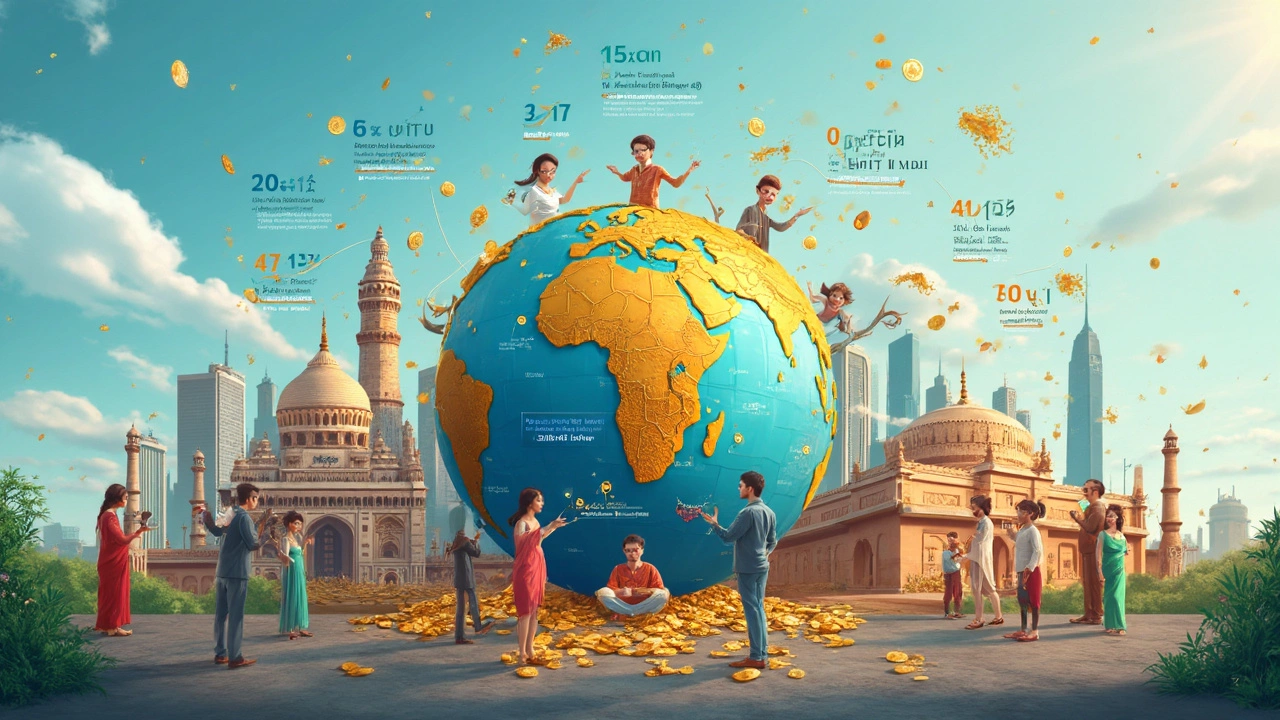GDP per capita: What It Is and Why It Matters
When examining GDP per capita, the total economic output of a country divided by its population, usually reported in US dollars. Also known as per‑capita GDP, it offers a quick snapshot of average living standards and helps compare prosperity across nations.
One of the first numbers that pops up when you look at India's economy is its average wealth, the sum of assets owned by households divided by the number of people. While GDP per capita focuses on production, average wealth tells you how much is actually sitting in people's pockets or bank accounts. The two metrics together paint a fuller picture: high GDP per capita can coexist with low average wealth if most of the output goes to a small elite.
To understand the gap, you need to bring the Gini coefficient, a measure of income inequality ranging from 0 (perfect equality) to 1 (maximum inequality) into the conversation. India’s Gini coefficient has hovered around 0.35‑0.38 in recent years, indicating a moderate level of disparity. This inequality directly influences both GDP per capita and average wealth, because a skewed income distribution means the average person may not feel the benefits of economic growth.
How Other Indicators Connect to GDP per capita
Economic growth, measured by the yearly increase in total GDP, fuels changes in per‑capita figures. If the economy expands by 7 % but the population grows by 2 %, GDP per capita climbs roughly 5 %. However, that boost only translates into better living standards when it’s accompanied by rising wages, lower inflation, and improved public services.
Another crucial adjustment is the purchasing power parity (PPP), a method that equalizes the buying power of different currencies by accounting for price level differences. PPP‑adjusted GDP per capita allows you to compare how far a dollar stretches in India versus, say, Germany. Without PPP, a raw dollar figure can be misleading because goods and services cost less in India.
Inflation also plays a role. If prices rise faster than wages, the real value of GDP per capita erodes, even if the nominal number looks higher. That’s why analysts often look at real GDP per capita, which strips out inflation to show the true change in purchasing power.
All these pieces—average wealth, Gini coefficient, economic growth, PPP, and inflation—interlock to give you a nuanced view of prosperity. When you see a headline about India’s GDP per capita rising, ask yourself: Are wages keeping pace? Is income inequality shrinking? Does the average household feel richer? Those are the questions that turn a simple number into actionable insight.
GDP per capita isn’t just a statistic; it’s a lens that helps you see who’s benefiting from growth and where policy could close gaps. Below you’ll find a collection of articles that, while covering love, culture, and inspiration, also touch on wealth, economic trends, and the broader Indian experience—offering a wider context for understanding the numbers behind the nation’s progress.
